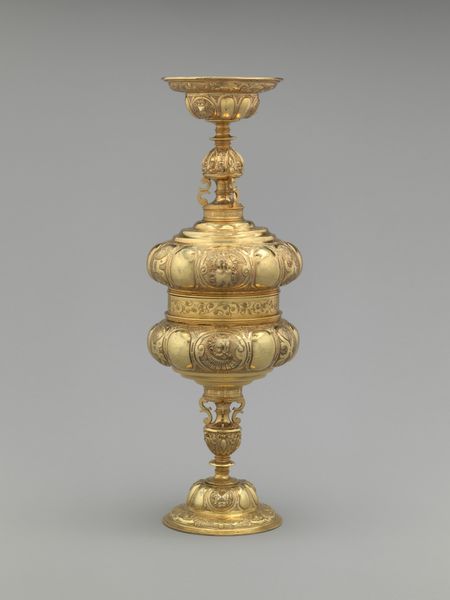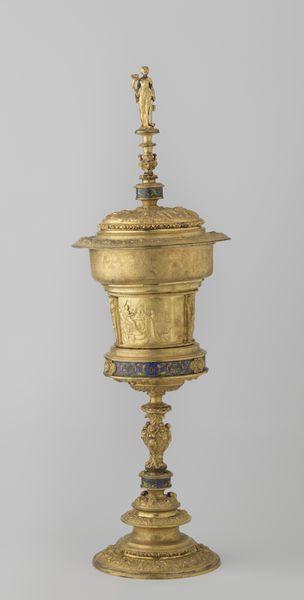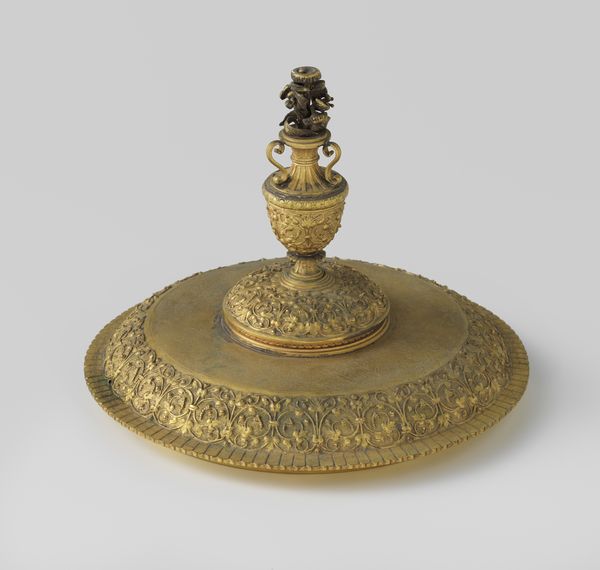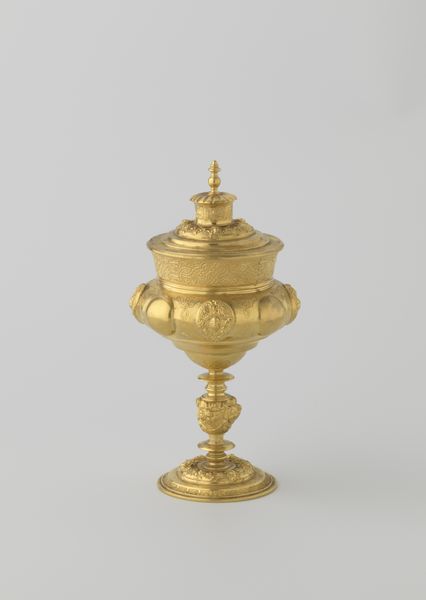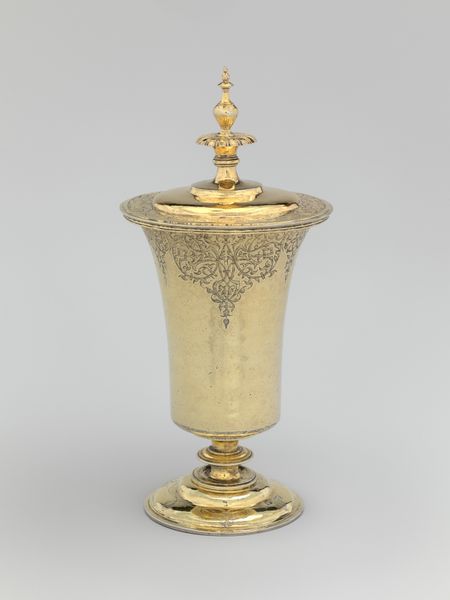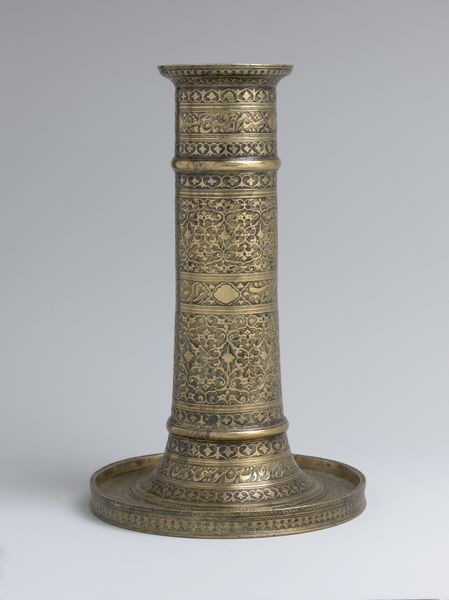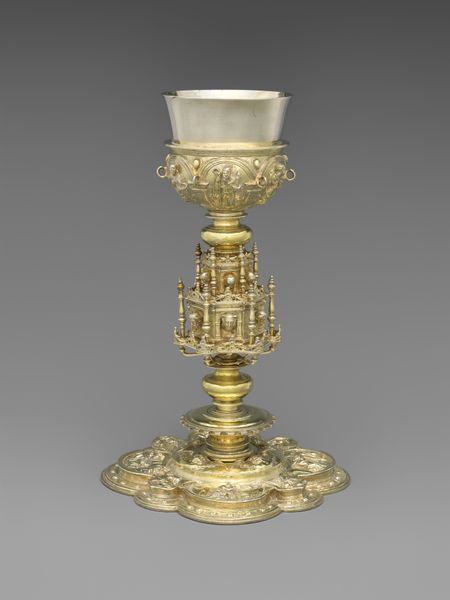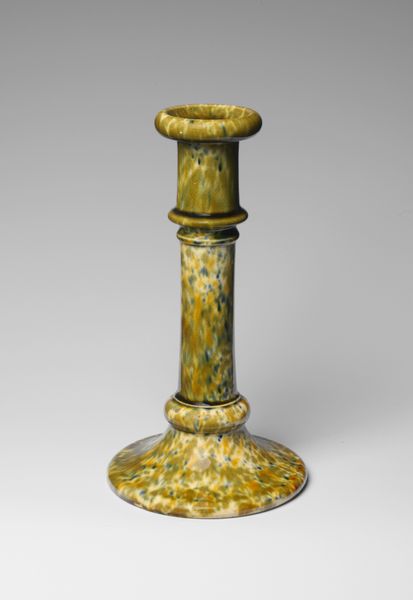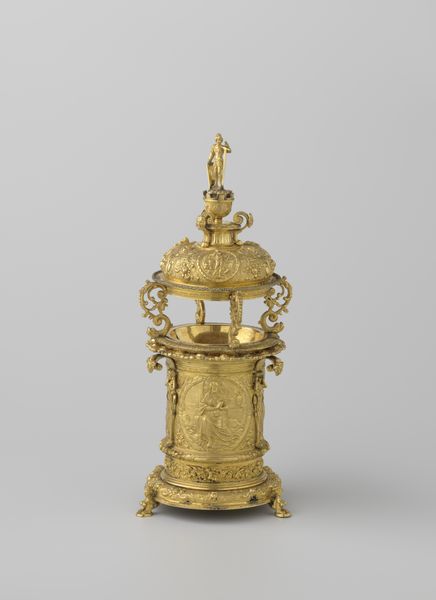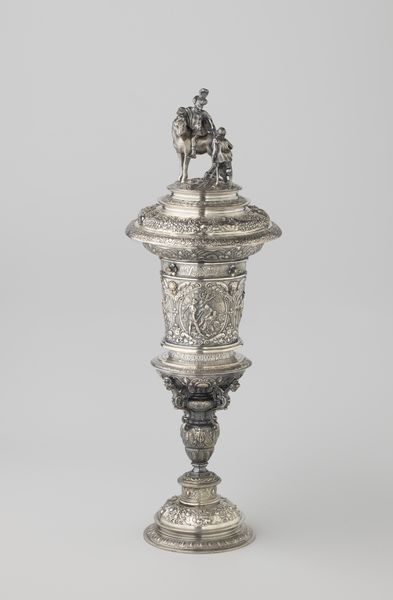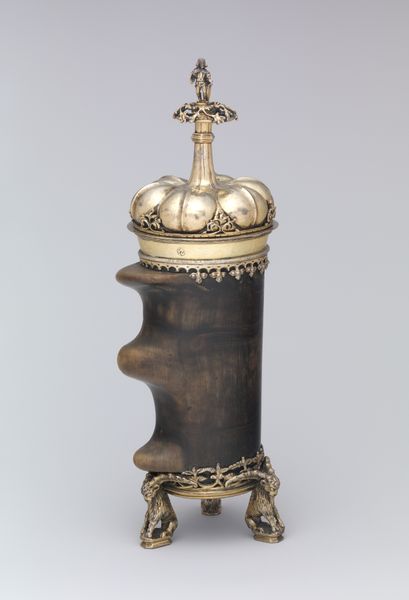
Galvanoplastische reproductie van de "Pokal mit Jonas" uit het Lüneburger Ratssilber before 1881
0:00
0:00
brass, metal, sculpture
#
brass
#
medieval
#
metal
#
appropriation
#
sculpture
#
decorative-art
Dimensions: height 63 cm, diameter 24 cm
Copyright: Rijks Museum: Open Domain
Curator: At first glance, I'm struck by its monumental feel, even though I imagine it’s rather small. The burnished gold color evokes images of religious iconography, but somehow feels earthy at the same time. Editor: Let’s delve deeper. What you’re seeing here is a galvanoplastic reproduction of the "Pokal mit Jonas" from the Lüneburg Ratssilber, crafted before 1881 by Fa. Vollgold & Sohn. It’s primarily made of brass and other metals, and classified as a sculpture embodying decorative art. What does appropriation mean in this context? Curator: Well, think about it: Lüneburg's Ratssilber held profound social significance, representing civic pride and wealth. To reproduce it using the galvanoplastic method – essentially electroplating – allowed for wider distribution and thus, access, altering its symbolic value. Suddenly, a piece linked to elite power became available, challenging social hierarchies through accessible artistry. Editor: Precisely. It reveals a fascinating tension: the desire to democratize art versus maintaining the exclusivity traditionally associated with handcrafted treasures. What are your thoughts on how such reproductions influenced contemporary perceptions of artistic authenticity and value? Curator: It prompts essential dialogues about accessibility and ownership. The Pokal's reproduction, by embracing industrial techniques, made art more available, and yet, questions persist – who decides artistic value? And does replicating undermine authenticity, or can the reproductive act itself carry creative and subversive potential? How might it impact our perception and commodification of art today? Editor: The piece truly complicates easy notions of what's "original" versus "copy", raising concerns that remain profoundly relevant. The social and cultural impact of replicas should also make us question what such production represents, who benefits and what role the historical narrative surrounding it has. Curator: Looking closely, you start seeing the questions hanging there, almost asking what value this really holds outside of itself and what statements about class, value and labour were actually trying to be put forward. Editor: A copy that prompts questions. Thank you for your perspective.
Comments
No comments
Be the first to comment and join the conversation on the ultimate creative platform.

